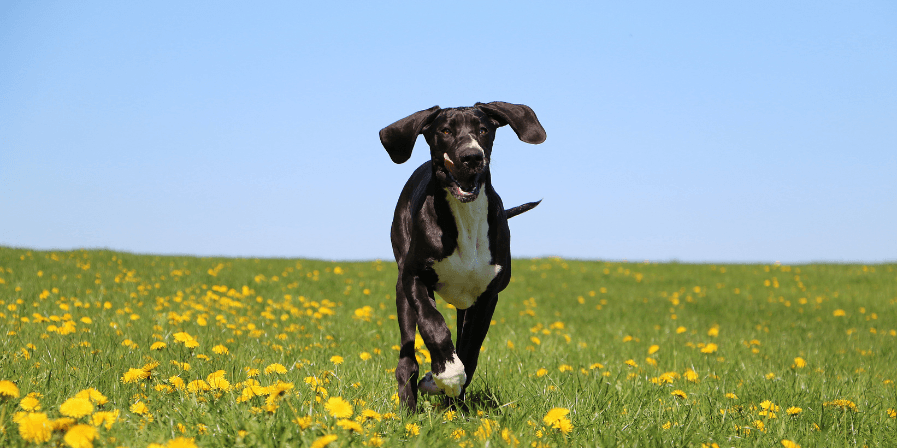Great Dane Adoption: What to Expect and How to Prepare

Adopting a dog is a significant and rewarding responsibility, and choosing to adopt a Great Dane comes with its own set of unique considerations. Known as “gentle giants,” Great Danes are one of the largest dog breeds in the world, yet they are also some of the most affectionate and loyal companions. However, adopting a Great Dane requires proper preparation and understanding of the breed’s needs. From their size to their temperament and health requirements, it's essential to be fully aware of what you're getting into before bringing a Great Dane home.
In this blog post, we’ll discuss what to expect when adopting a Great Dane, how to prepare for their arrival, and tips for ensuring your home is ready for a dog of this size and personality.
Understanding the Great Dane Breed
Before diving into the adoption process, it’s important to understand the breed. Great Danes are large, powerful dogs with a gentle and friendly demeanor. They are known for their calm, loving nature and are often referred to as "gentle giants" because of their size combined with their typically docile temperament. Despite their intimidating appearance, Great Danes are often great with children and other pets, making them excellent family dogs.
Choosing the right breed is crucial for any household, and Great Danes can be a great fit for families. However, they also have some specific needs that set them apart from smaller dog breeds.
Size and Space Requirements
Great Danes are one of the largest dog breeds, with males standing 30 to 34 inches tall and weighing between 140 to 175 pounds, while females typically stand 28 to 32 inches tall and weigh between 110 to 140 pounds. Because of their size, these dogs need plenty of space to move around comfortably. While they can adapt to apartment living, it’s important to remember that they require regular exercise and ample room to stretch out.
Before adopting a Great Dane, assess your living situation. Do you have enough space for a large dog? Is there a yard or nearby park where they can exercise? If you live in a smaller home or apartment, daily walks and exercise routines become even more important to keep your dog healthy and happy.
Preparing Your Home for a Great Dane
Once you’ve decided that you’re ready to adopt a Great Dane, preparing your home is the next crucial step. Here are a few ways to ensure your space is set up for a smooth transition:
1. Create a Comfortable Resting Area
Great Danes are large dogs and, like all dogs, they need a comfortable space to rest. Invest in an oversized dog bed or create a soft area where your Great Dane can stretch out and relax. Avoid small or cramped spaces, as they won’t offer the comfort a dog of this size requires.
It’s important to place their bed in a quiet area of the house where they can sleep without being disturbed. Because of their size, Great Danes are prone to joint and bone issues, so providing them with a supportive and comfortable place to rest is essential. For tips on keeping your home safe for your pets, check out avoiding pet accidents at home.
2. Secure Fragile or Breakable Items
Because of their size and strength, Great Danes can unintentionally knock over items with their tails or while walking through tight spaces. Before bringing your new dog home, be sure to secure fragile or breakable items, especially those at tail height. Think of your home from the perspective of a large dog – anything that can be bumped or knocked over should be moved to a safe place.
3. Prepare for Feeding Needs
Great Danes have large appetites, and it’s important to be prepared for their nutritional needs. Consult with your vet or a dog nutritionist about the best food options for your Great Dane. Typically, large-breed dogs like Great Danes require high-quality food formulated for their size to support their growth and joint health. Be sure to invest in large, sturdy feeding bowls as well. Elevated feeders can be beneficial for Great Danes, as they can reduce strain on their neck and spine while eating.
4. Invest in Durable Toys
Great Danes love to play, but given their size, they can easily destroy flimsy or delicate toys. Invest in large, durable toys that are designed for heavy chewers. Whether it's tug-of-war ropes or heavy-duty chew toys, making sure they have the right playthings will help keep your Great Dane entertained and prevent them from chewing on household items out of boredom.
What to Expect When Bringing Your Great Dane Home
Once your home is ready, it's time to prepare for the actual adoption process. Adopting a Great Dane can be a rewarding experience, but it’s important to go into it with realistic expectations.
1. Adjusting to a New Environment
Like any dog, your Great Dane may take some time to adjust to their new home. Be patient as they settle into their surroundings and become comfortable with your family and routine. Offer plenty of positive reinforcement and affection during this transition period.
Great Danes are known for being sensitive dogs, so they may be a little shy or anxious when they first arrive. Ensure they have a quiet, safe space where they can retreat if they feel overwhelmed.
2. Exercise and Playtime
Despite their size, Great Danes don’t have particularly high energy levels. They require regular, moderate exercise, such as daily walks or playtime in the yard, but they aren’t as high-energy as some smaller breeds like terriers or retrievers.
Regular exercise is important not just for their physical health but also to prevent boredom and destructive behaviour. However, due to their size and susceptibility to joint problems, avoid high-impact activities like jumping or running on hard surfaces. Socializing your dog during these activities can also enhance their well-being and strengthen your bond; for more on this, read socializing your dog.
3. Training and Socialization
Training a Great Dane is essential, particularly given their size. Basic obedience training should begin as soon as possible. Despite their gentle nature, a Great Dane that isn’t trained can be difficult to manage simply because of their size and strength.
Socialization is also important to help your dog become comfortable around other animals and people. Enroll your Great Dane in obedience classes or introduce them to new environments regularly to ensure they grow into a well-mannered, confident adult.
Health Considerations
Great Danes, like many large-breed dogs, are prone to certain health issues, including hip dysplasia, bloat (gastric torsion), and heart disease. Regular vet checkups are critical to monitor their health and address any concerns early.
Feeding your Great Dane in smaller, more frequent meals can help prevent bloat, a life-threatening condition that requires immediate veterinary attention. Consult with your vet about the best diet and feeding schedule for your dog.
Conclusion
Adopting a Great Dane can be a fulfilling experience for those who are prepared for the responsibility. These gentle giants make loving companions and are sure to bring joy to any household. By understanding the breed’s unique needs and taking the necessary steps to prepare your home, you’ll be well on your way to providing a happy, healthy life for your new Great Dane. Proper planning, training, and care will ensure your Great Dane thrives in their new forever home.
FAQs
1. Is Great Dane a good family dog?
Yes, Great Danes are known for their gentle, calm demeanor and are often referred to as "gentle giants." They are generally good with children and other pets, making them great family companions.
2. How much space does a Great Dane need?
Great Danes are large dogs, so they need a spacious home where they can move around comfortably. Ensure they have a large, comfortable bed and a quiet space to rest.


 How can we help?
How can we help?